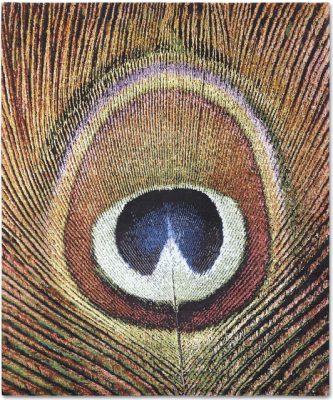Just as we today look back at our forebearers, those amongst us who will eventually write the annals of this time will surely look back with similar wonderment asking themselves the same tired question of ‘What were they thinking?’ This question – either uttered in bewilderment, inquisitively, or in a lovely melange of the two – has at its core the desire to fully understand, to comprehend, to grasp if you will what was going on during that other time. To come to understand what they – whomever they might have been – were like or more importantly to the discussion at hand, what influenced their decisions as they made the now so called great carpets of our past. Why are they great? What – beyond being fortuitously extant in our time – gives these carpets a provenance more authentic? What does that even mean, to be authentic, to be great?
Without a comprehensive understanding of exactly what ‘authentic’ really means, the rug industry (and society in general) is now run amuck with the use of the term authentic simply as a means to give decisions made today credibility. I suppose, no, I postulate this desire for authenticity in rugs and carpets has its roots in the fact that the ‘hand’ in handmade is slowly being taken from us. If we are to look backward for credibility, we are to look at a time before computer aided design and standardized colour palettes of twelve (12) to fourteen (14) hundred like colours, to a time when everything was done by hand and the understanding of colour was more than a number.
[wc_row][wc_column size=”one-half” position=”first”]
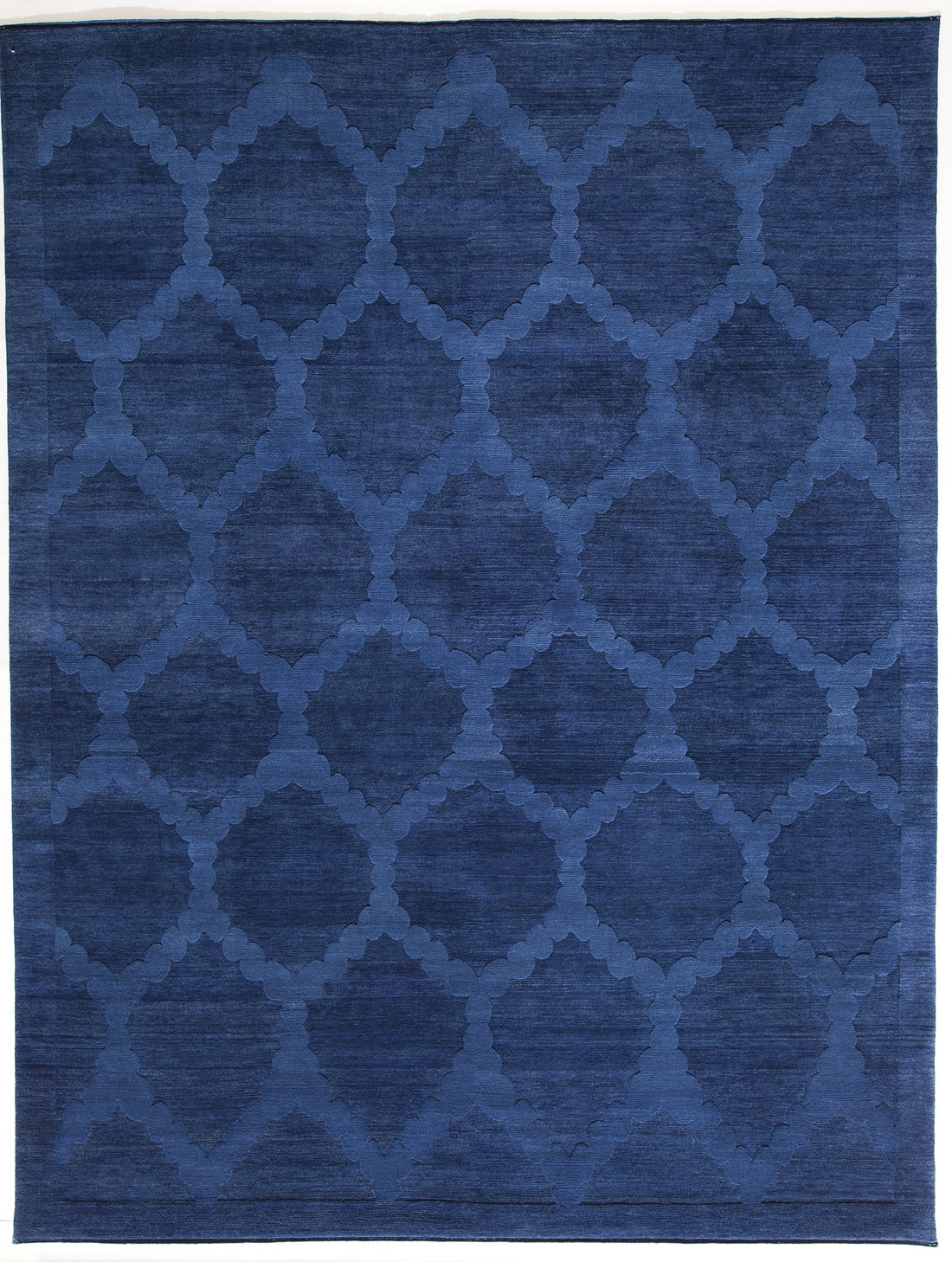
[/wc_column][wc_column size=”one-half” position=”last”]
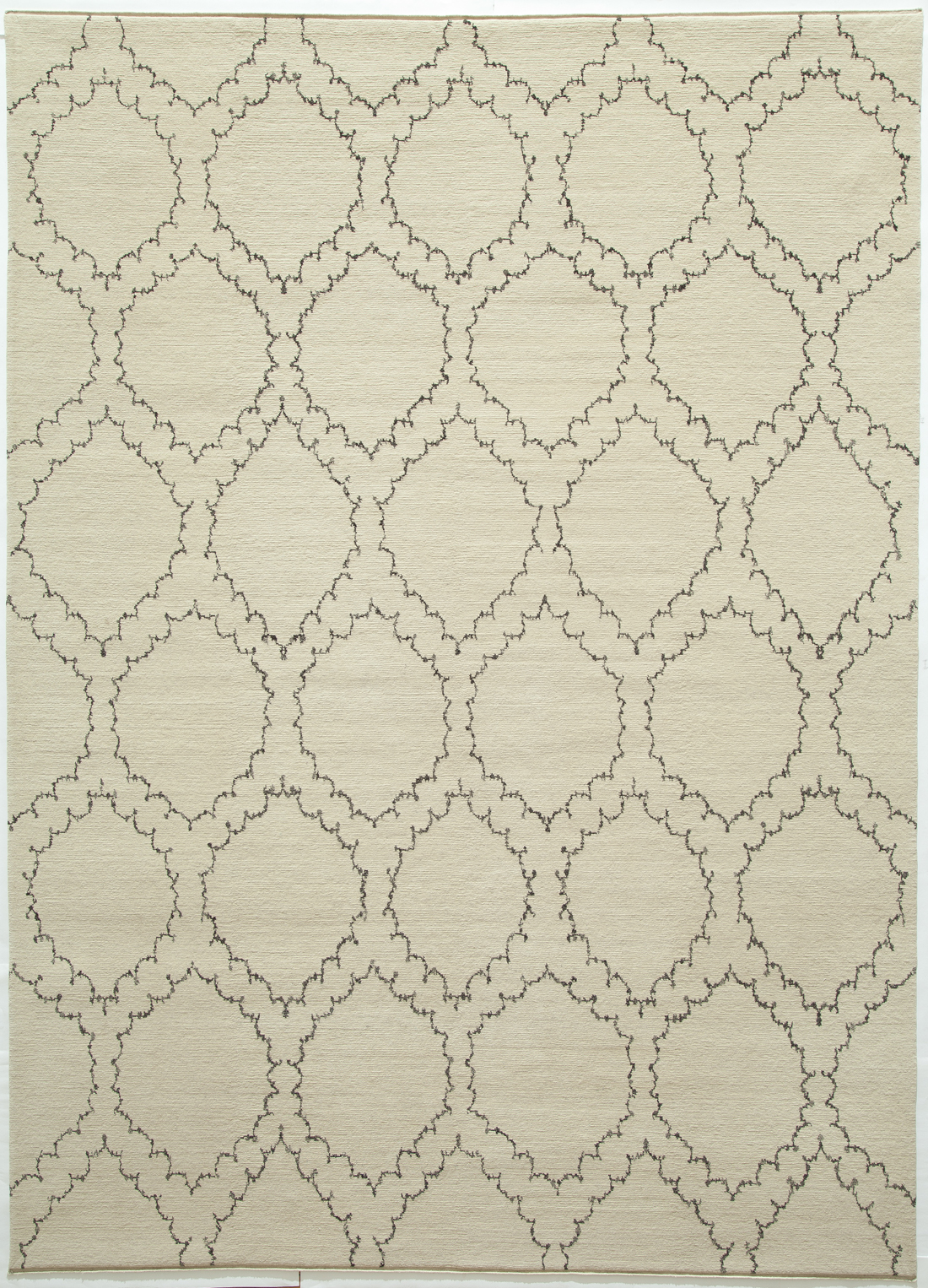
[/wc_column][/wc_row]
Around this past Labour Day I had the pleasure of corresponding with a long term friend and colleague named Tom DeMarco. Through a series of emails we discussed his carpet ethos and methodology and how the decisions he makes regarding his carpet construction contribute not only to their quality, but also to their mysterious je ne sais quoi of desirability. Without further adieu, I present a unique behind the scenes look at the creative process that defines one man’s vision for making an authentic carpet in this day and age. Ladies and gentlemen: Kooches.
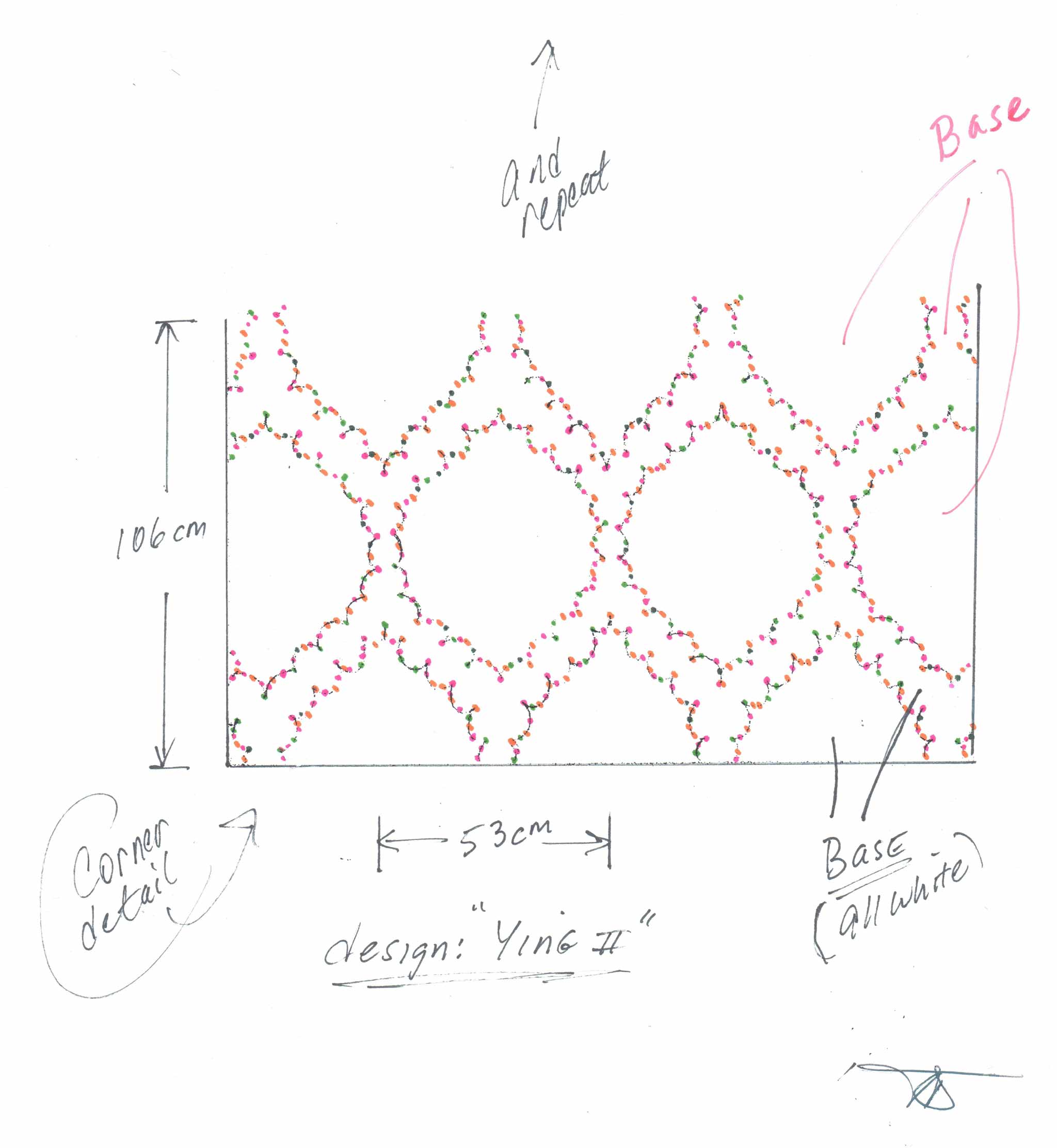
‘I am a dinosaur.’ begins Tom DeMarco as we’re discussing how things – as we’re calling them – are done at Kooches. ‘For the most part my hand drawn designs are translated to loom graph entirely by hand. This is the directive and it matters to me. The one exception is very small repeats; Dorje talked me out of doing those entirely by hand.’ The Dorje Tom is referring to is none other than Dorje Shrestha a ‘supremely talented carpet producer who was born into a family of wool traders in Tibet and who has been making carpets for over thirty (30) years.’ While not entirely unique in the normally secretive carpet industry it is rare for an importer/producer to be so publicly forthright about who is making their carpets. As such it’s refreshing to hear the open manner of Tom as he speaks about the genuine ‘global collaboration among uniquely experienced and talented people’ that yields a finished Kooches carpet.
‘I see the difference, crave the difference and viscerally feel the difference.’ Tom says of the collaboration of humans with amazing handcrafted natural materials. ‘I value this.’ he explains. This from a man whose original artwork – and I mean this with all the sincerity and deference you would pay anyone whose grandiose and successful ideas had such humble beginnings – is strikingly reminiscent of a ‘back of the envelope’ business plan. Take for example the line drawing shown above for ‘Ying II’. It’s a big picture, this is the idea of the carpet I want, now how do we make it happen kind of plan. For Tom however it’s not about being dismissively big picture – let someone else deal with the details, it’s about possessing a masterful understanding of the entire handmade process (details included) and trusting the collaborative workings to produce the intended results.
Prodding further I interject the notion of hand drawn/rendered versus that of CAD supposing that the subtlety of a hand drawn curve has the potential to be just ‘that much nicer’ than others due to minor nuances and how the confluence of each step being executed ‘just so’ creates any one singular carpet. ‘Can’t teach you nothing.’ Tom begins, ‘It can also make an unpleasant mistake. Such is life, but again, the effort is worth it to me. My directive to the weavers is to follow the loom graph as closely as possible. The subtle differences are already compounded enough to create a very unique and human design. Of course differences do happen at the weaving stage and often they are not noticeable, but sometimes they are a real bummer to the ambiance and the intention of the carpet and then again sometimes it is a fortunate mistake that we are pleased to try to repeat again and again.’
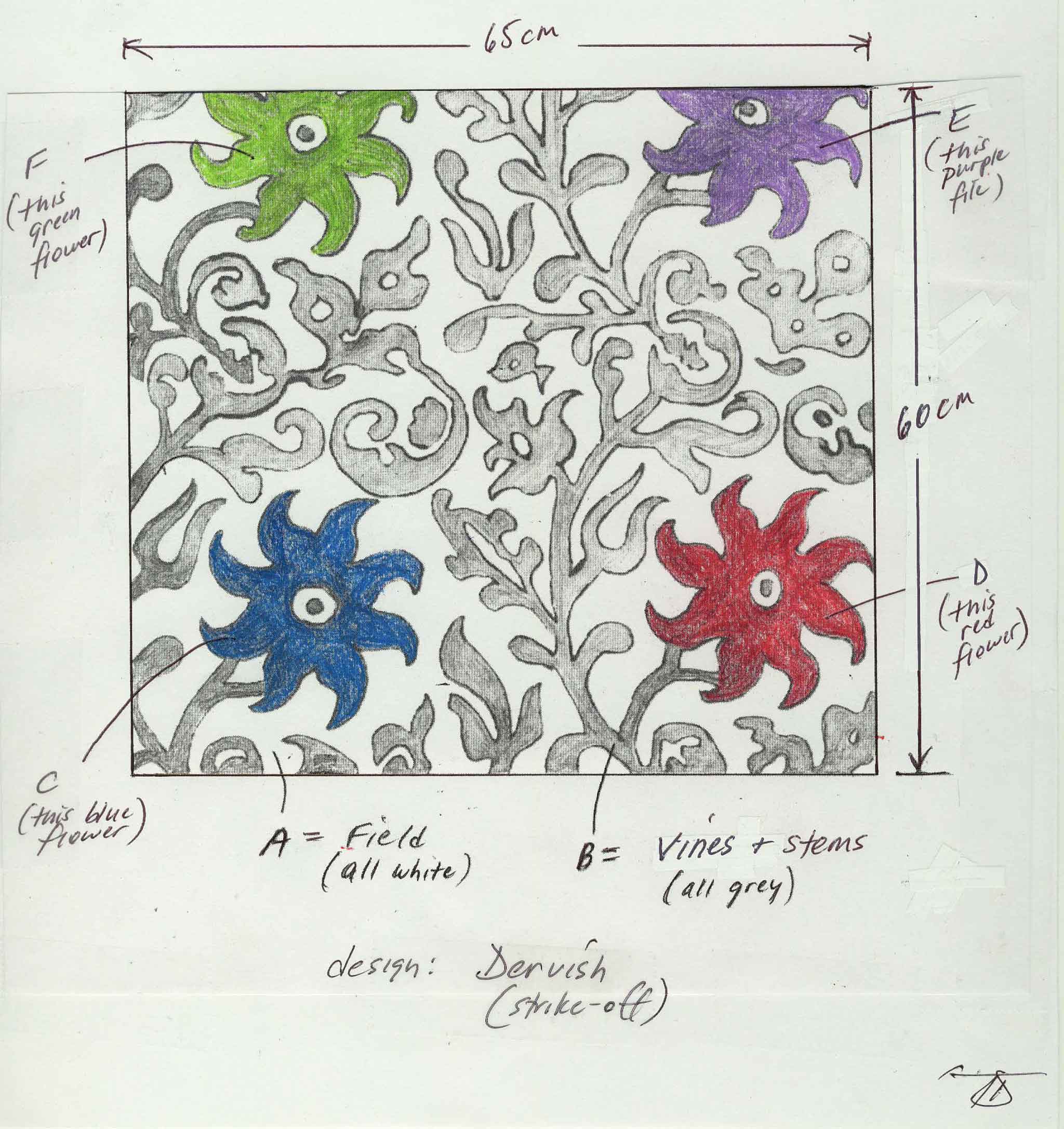
Even for those carpets created in the same past time and place, difference and nuance have always been what separates the great carpets from the mediocre. Just as when we spoke with Christiane Millinger, my thoughts now turn to the expectations of contemporary consumers and how their ready-made machine produced world interacts with our anachronistic world of handmade. I think of photorealistic rug designs or pixel by pixel designing and wonder if the beauty of handmade is being lost in this our ever increasingly machine made world. While there certainly would have been a point in time when a human executing a ‘perfectly’ made carpet was desirable, for our up and coming clients (read: young folk) who know what perfectly made looks like because of machine, is it even necessary, let alone desirable, to make such perfectly beautiful handmade goods? Is this the difference between a fully bespoke suit and say a tailored prêt-à-porter suit? They both fit you well, but is one just that much better?
‘My point of view is clear by how we do things here at Kooches. I do think there is room for all kinds of production and all different degrees of ‘handmade’, [but] I do wish the audience was bigger and bolder for the more handcrafted variety of handmade.’ Tom responds, ‘Time will tell if this indeed a growing or shrinking sector – I am not sure yet but I will stick to my guns and go down or up the old fashion way.’
Foremost amongst the problems now facing completely [emphasis borrowed from Tom] handcrafted production is that it takes very knowledgeable, sophisticated, confident salespeople to sell. ‘It takes a salesperson that can say we won’t deliver you a carpet that looks exactly like your sample or exactly like the 8×10 in our pile. We will deliver you a carpet that will look as beautiful in your room as the piece in our showroom, but if you look for differences you will find them and it is not because we messed up it is exactly because we succeeded in making something extraordinary.’ Tom relates ‘Not so many salespeople have the guts to say that…. They want to tell the client what they want to hear instead of teaching them something that will enhance their appreciation of amazing functional art.’
While we’re discussing the expectations of consumers and salespeople it seems appropriate to introduce the subject of colour: ‘Natural versus synthetic dyes?’ I ask, encouraging him to ramble… ‘Natural!!!’ he begins with that many exclamation marks as if this was a 1950s era comic book. ‘It makes a world of difference to me, but the experts on the retail/trade side try and try to talk me out of it. They seem to think it only causes problems and no one sees the difference.’ I want to sense a bit of sarcasm in Tom’s use of the work ‘expert’ and wonder if the these are the same people who also just tell clients what they want to hear all the while thinking of ‘The Death of Expertise’ by Tom Nichols. But, just as Mr. DeMarco continued ‘Hogwash I say.’
‘I am doing fewer and fewer natural dyes over time for custom orders though.’ says Tom ‘My wholesale clients say the business is all about matching the sample exactly. I believe if you give the customer (who [may likely] know near nothing about carpet production) exactly what they want they get something inferior. I’m here to save them from themselves (send me all your clients that need saving please!)’
[wc_row][wc_column size=”one-half” position=”first”]
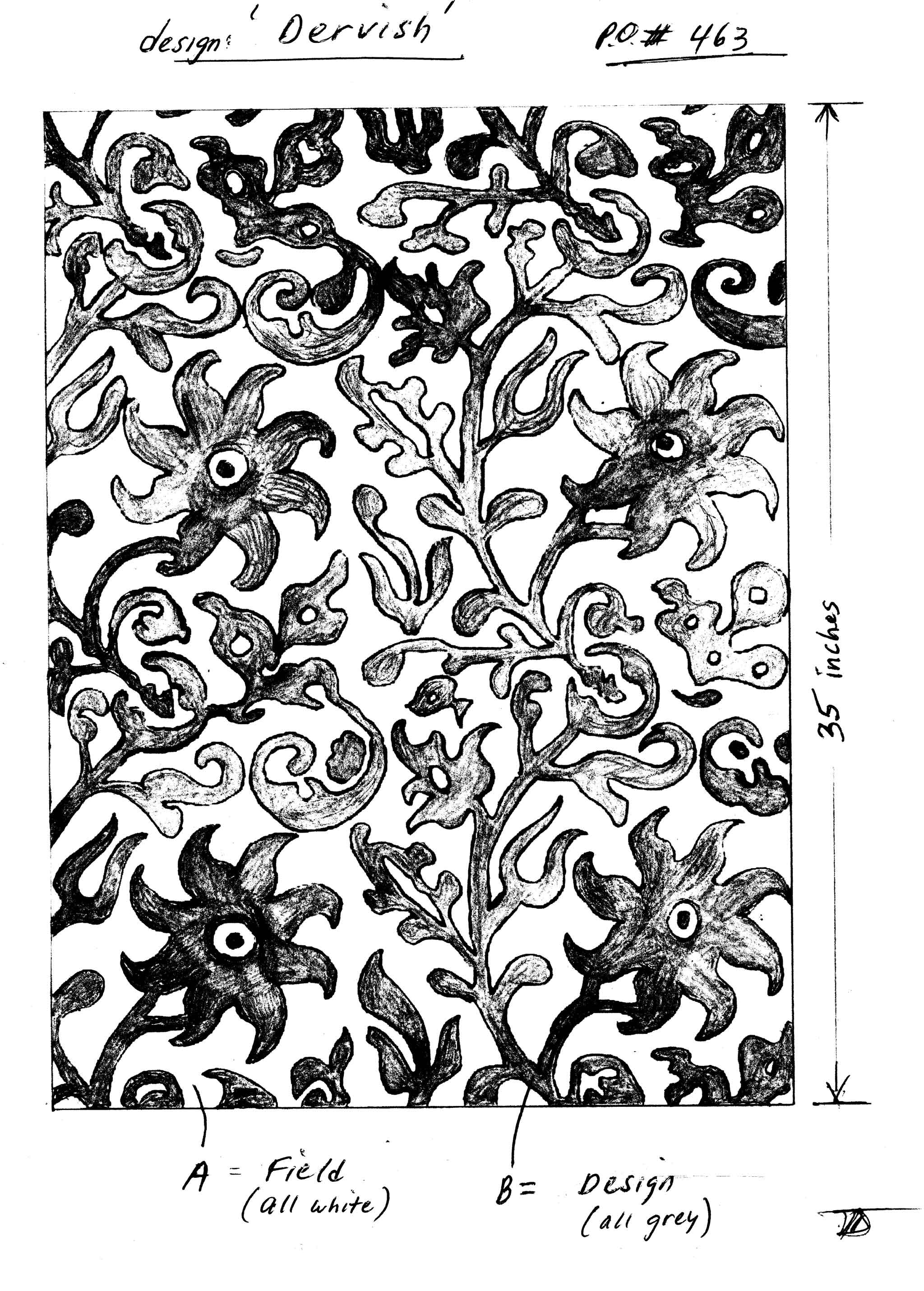
The design ‘Dervish was inspired by a very small element in an ancient Moroccan belt adapted for use in a carpet by Tom DeMarco.
[/wc_column][wc_column size=”one-half” position=”last”]
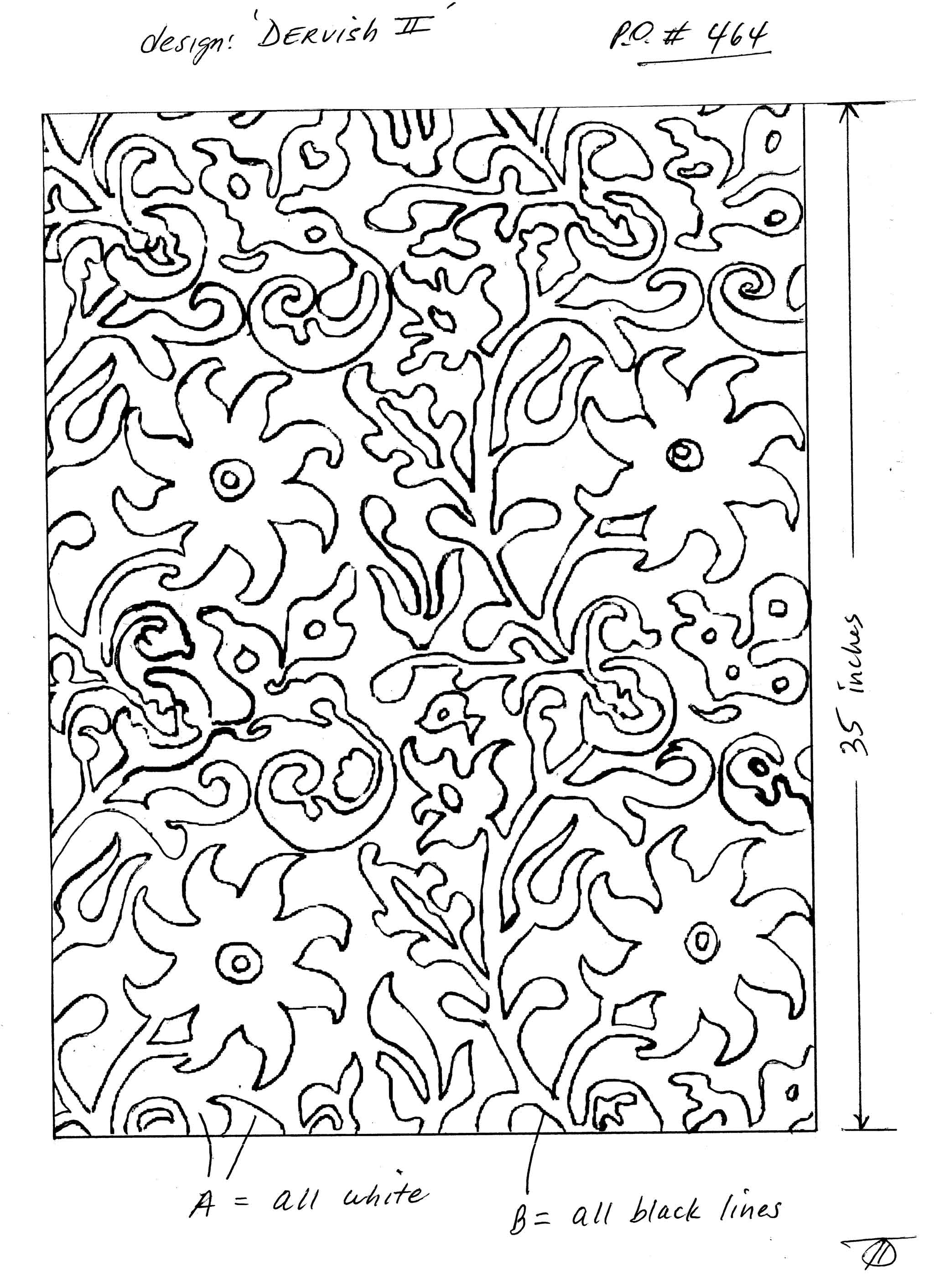
‘Dervish II’ by Tom DeMarco – Inspired by a small detail on a Moroccan belt. | Image courtesy of Kooches
As has been indicative of Tom’s design work for many years, you can see the derivative nature and use of positive and negative space here in ‘Dervish II’.
[/wc_column][/wc_row]
[wc_row][wc_column size=”one-half” position=”first”]
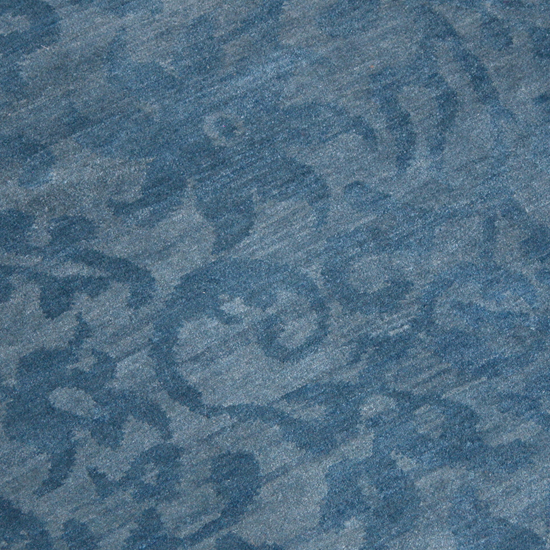
The monochromatic colouration of ‘Dervish’ is quite subtle in its use of design.
[/wc_column][wc_column size=”one-half” position=”last”]
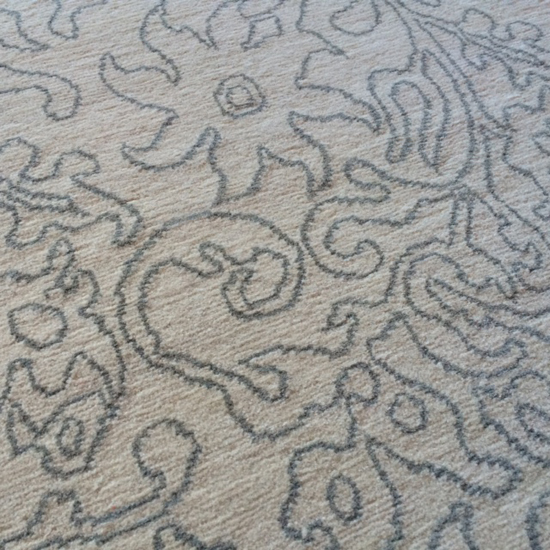
Whereas the crisply outlined filigree like nature of ‘Dervish II’ draws more attention.
[/wc_column][/wc_row]
Exploring exactly how much Tom is willing to leave to chance versus relative control I ask him about special washing. ‘No special washes. Not much of a believer in changing the colours in the wash. Too imprecise. We do a thorough wash but nothing that will change the colours in the wash. I want the colours of the carpet to be the same before and after the wash. i.e. I want the colours to look as they do when I design it.’ he concludes with a position clear. I find the reasons for choosing one methodology over another fascinating. How do all of these decisions he has made relate (if they do) to authenticity. Certainly pre-commercialized Nepali production was free of special washing, but for a period in the late nineties and early aught twenties special washes reigned supreme and indeed have not gone away. Which is more ‘authentic’? A carpet produced in each period is authentic (genuine) to its own era, so how can we say one is more of less unqualified ‘authentic’? I am not sure we can, nor does it really matter.
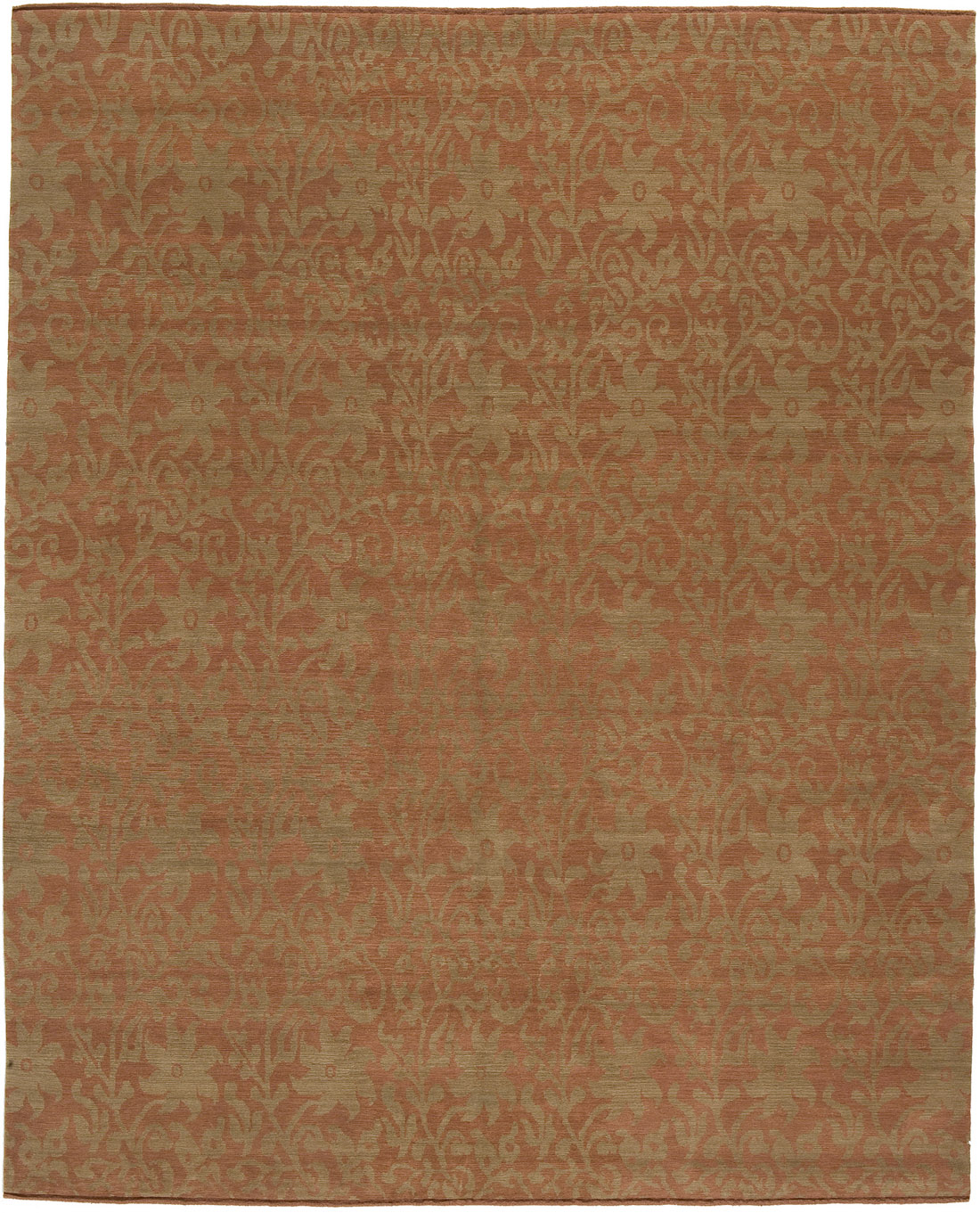
‘Colour to me makes up ninety percent (90%) of the success or failure of a carpet – with colour as a product of both the materials and the dye, design (and drawing) one percent (1%), and structure/texture nine percent (9%).’ Tom interjects, ‘You didn’t ask but what he heck while I’m telling you how far off the rails I am I might as go all the way.’ In revealing his thoughts behind the true success of a design – it’s the colour in case you missed that, Tom also reveals why I said it does’t really matter. If people are choosing carpets based on how colour speaks to them we must ask: How are they appreciating colour? As an analogy, are they purchasing art because it matches the sofa or because it speaks to them. Neither methodology is wrong per se, but one requires a – how does one say delicately – more sophisticated design sensibility.
Time however is the real test of all of this. The proven techniques that remain in or continually return to common usage are the ones that we must consider as unqualified authentic. The rest are potentially mere fads. Eventually some fads will catch on and become tradition, and thus authentic, but unfortunately we know not when or if that will happen, let alone what happens when a tradition falls out of fashion and common usage. Instead we must simply make decisions based on the entire sum of our own technical knowledge and artistic vision. Tom’s – as is apparent in his carpets – is one of a full embrace of the ‘hand’ in handmade. The carpet world equivalent of the entire ‘slow’ movement; one in which there are many variables to consider with no one true authentic way. Only ones with carefully considered, and in cases such as these, proudly presented choices. [Note: Jan Kath recently applied the term ‘slow making’ to his carpets in this video.]
‘I’m currently on this kick where I am enjoying my things ageing with me.’ I tell Tom in an email, rambling on about fifteen year old carpets with stains from events in my life now past, further explaining how I find great subtle joy in watching a carpet age. ‘I agree.’ says Tom fortunately otherwise this would have gone horribly wrong. ‘Lots of folks want an instant attitude or ambiance when they design an interior. An interior should look like it was developed and created over time and better yet actually be a product of years of collecting. Instant gratification should be a term used for food and drink not art and home furnishings that should last for decades [if not more].’
When I first heard of Kooches… Rather I should say when I first came to learn that was the name of Tom DeMarco’s new rug company, I became enamoured if not also intrigued. What kind of name is Kooches anyway? ‘What does it mean?’ I remember asking myself (and Tom) at the time. I guess I just wanted to know: ‘What was he thinking?’ I got an answer then, but I think time has honoured Kooches by bestowing just a bit more meaning. Now, when you think of it, think of one man’s vision of carpet making, exactly what it stands for, and what particular qualities you’re getting when you buy an – dare I say – authentic Kooches carpet.
Footnote: All of the designs are the intellectual property of Kooches and may not be reproduced. If you do choose to steal them you’re a bad person with no scruples or creativity.



